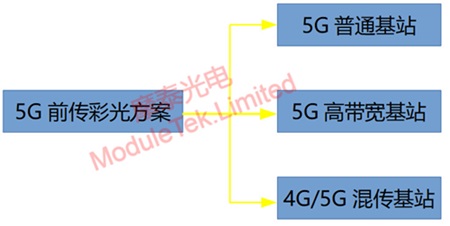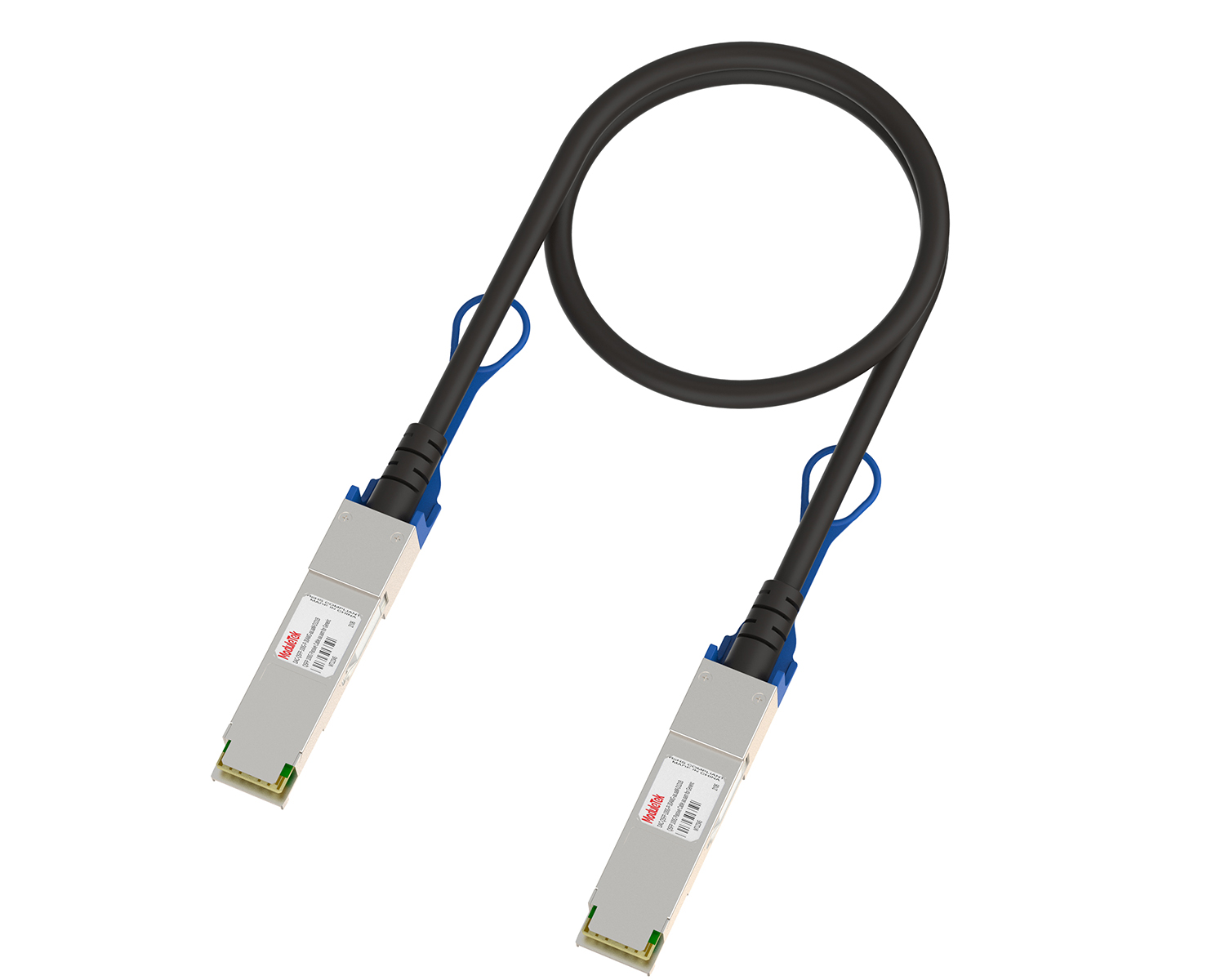Typical application of 25G color Optical Module in 5G Network
Time: 2020-03-29
• Typical architecture of 5G network
In a 5G network, the access network consists of three functional entities:
CU, Centralized Unit. The non-real-time part of the original BBU is split and defined as CU, which is responsible for handling non-real-time protocols and services;
DU, Distribute Unit. The remaining functions of the original BBU are redefined as DU, which is responsible for handling physical layer protocols and real-time services;
AAU, Active Antenna Unit. Some of the physical layer processing functions of the original BBU are combined with the original RRU and passive antenna to form the AAU.
According to the standards proposed by 5G, when 5G is deployed, taking into account factors such as service transmission requirements, construction cost investment, and maintenance difficulty, CUs, DUs, and AAUs can be discrete or co-located, so there will be a variety of network deployment forms in the real environment. The figure below shows a typical 5G network architecture, where DUs are deployed centrally and CUs are centralized at a higher level:

Figure 1 A typical 5G network architecture diagram
• 25G Color Optical Module in 5G Pre-transmission Application
In 5G pre-transmission applications, passive WDM is one of the most common connection methods: the colored light module is installed to AAUs and DUs, and the WDM function is completed by passive equipment, using a single optical fiber to provide connections from multiple AAUs to DUs. Optical signals of different central wavelengths transmitted in the same fiber will not interfere with each other, so the color light module achieves the synthesis of optical signals of different wavelengths all the way to the transmission, which greatly reduces the link cost.

Figure 2 Passive WDM connection in the 5G pre-transmission application
So how many colored light modules are needed in the pre-transmission application of a 5G base station? This is related to the design characteristics of each base station.

Figure 3 Transmission distance illustration
For a 5G ordinary base station, that is, most of the life and work scenarios, a base station three sectors, each sector uses a color light module, three sectors bidirectional transceiver, which requires six color light modules.
5G high-bandwidth base station, such as the CBD business district, a base station needs to cover more people, it will be used twice as much as the ordinary base station design, usually requires 12 colored light module.
For an ordinary BTS with 4G/5G mixed transmission, six 10G colored light modules for 4G and six 25G colored light modules for 5G are needed, so 12 colored light modules are also needed.
Moduletek Limited can provide 1270-1370 full 6-wave 25G single rate or 10G/25G dual rate optical modules with stable performance for customers to use in 5G pre-transmission service.
If you have any questions about the above content, you can contact us by Email : web@moduletek.com

 40G/100G Optical Transceivers
40G/100G Optical Transceivers 10G/25G Optical Transceivers
10G/25G Optical Transceivers 155M/622M/2.5G Optical Transceivers
155M/622M/2.5G Optical Transceivers 100M/1G Optical Transceivers
100M/1G Optical Transceivers FC 16G/32G Optical Transceivers
FC 16G/32G Optical Transceivers CWDM/DWDM Optical Transceivers
CWDM/DWDM Optical Transceivers 100M/1G/10G Coppers
100M/1G/10G Coppers Active Cable AOC
Active Cable AOC Direct Attach Cable DAC
Direct Attach Cable DAC Regular/MTP-MPO Fiber Patch Cords
Regular/MTP-MPO Fiber Patch Cords MT2011
MT2011 MT2010
MT2010 CodingBox
CodingBox






